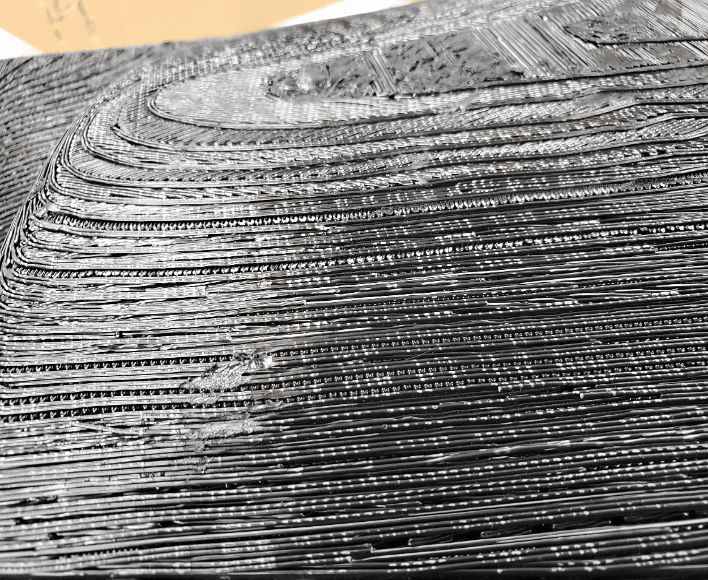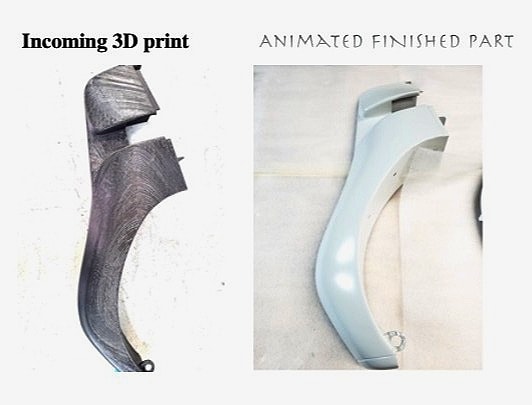Animated Design – Painting 3D Prints
It has long been established that 3D printing is going to play a large part in the future of manufacturing. 3D printing is already widely used in prototyping stages and in most situations the product finish includes painting 3D printed parts. After all, no one wants to go to a conference with a low-resolution 3D printed part. The process of painting 3D printed creations has an end result that brings the part to life. As seen below, before painting 3D printed creations the finish can have an unwanted topography and roughness.

Painting 3D printed plastics is challenging and can have its literal and figurative “pitfalls.” At Vivid we 3D print parts ourselves and work with 3D printed parts often. We know that not all 3D printed materials and processes can be treated the same. When painting 3D printed parts, we must first identify the plastic composition and resolution. The cleaning process, paint composition and curing process are based on these underlying factors.
Of course, before painting 3D printed parts, preparation is paramount. A low-resolution print can lead to a lot of extra preparation before painting 3D printed designs, but most hurdles can be overcome. If you have requirements that include painting 3D printed plastic, you may want to seek out a high-resolution printing technology to save time and money on finishing. SLA printers will inherently have a better resolution and accuracy than FDM allowing for an easier process for painting 3D printed plastic.

Switching the process altogether is not the only means of improving resolution, the quality of the printer used, parameters and type of filament used in an FDM print process can also provide a better surface for painting 3D printed parts. The type of plastic will also play a role in the resolution, some plastics shrink more than others and painting 3D printed surfaces will change dimensions even more because of the preparation before paint.
After some professional prep work, painting 3D printed substrates can result in the same characteristics as any other finish including gloss, texture and even soft touch. Painting 3D printed assemblies or two-color parts can provide insight on if two or more colors are easy on the eyes or if they end up clashing more than planned.
Vivid Enclosure Group has a lot of experience painting 3D printed designs that end up at large trade shows including famous shows like Consumer Electronics Show. Although 3D printing is not yet a high-volume fabricating solution, painting 3D printed designs can give your design group a great feel for how the finished part or assembly will appear.

